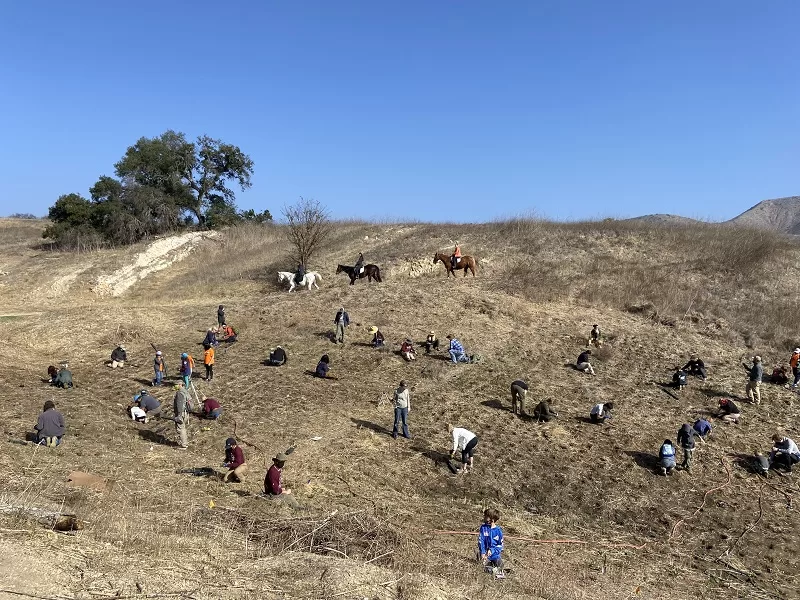
After 7,000 hours of participation from 3,000+ volunteers, the park’s largest ever restoration project to restore 100,000 native plants in the Santa Monica Mountains is now completed, according to National Park Service officials.
About 30 high school students from high schools in East Los Angeles joined dozens of other volunteers on Saturday, March 25, for the final planting event held at Rancho Sierra Vista in Newbury Park starting at 9 a.m. The park embarked on the two-year project, funded by Snap, Inc., the Santa Monica Mountains Fund, and Rewild, to restore 100,000 native plants (10,000 trees and 90,000 herbs and shrubs) to five sites in Santa Monica Mountains National Recreation Area.
“Nobody’s doing this kind of work – at least on a collective scale,” said Joey Algiers, a restoration ecologist who has led the project. “Through long-term monitoring, we discovered that we had lost about 100,000 riparian trees prior to the November 2018 Woolsey Fire. The reason for that includes prolonged drought and other wildfires.”
Algiers said that when Woolsey came along, many more trees and other plants were burned and lost. Restoring plant communities became a goal for the park. All plants for this project were grown from seeds that were locally collected from the Santa Monica Mountains. All the plants were grown in the park’s Rancho Sierra Vista native plant nursery.
The park recruited volunteers and began planting in October 2021. The five sites of the project – Cheeseboro Canyon, Paramount Ranch, Peter Strauss Ranch, Rocky Oaks, and Rancho Sierra Vista – were all impacted by recent wildfires, including the Woolsey and Springs wildfires.
The rebuilding of creek areas provides critical habitat for a whole suite of animals, including birds of prey, hawks, owls, etc. For predator mammals like bobcats and mountain lions riparian areas act as cover. As planted trees mature, their canopies connect to each other, providing a source for travel for small mammals and other wildlife.
Algiers said this project brought diverse people together from all over the region and from all walks of life. “We’re thankful to the thousands of dedicated volunteers who made this happen,” he said.




